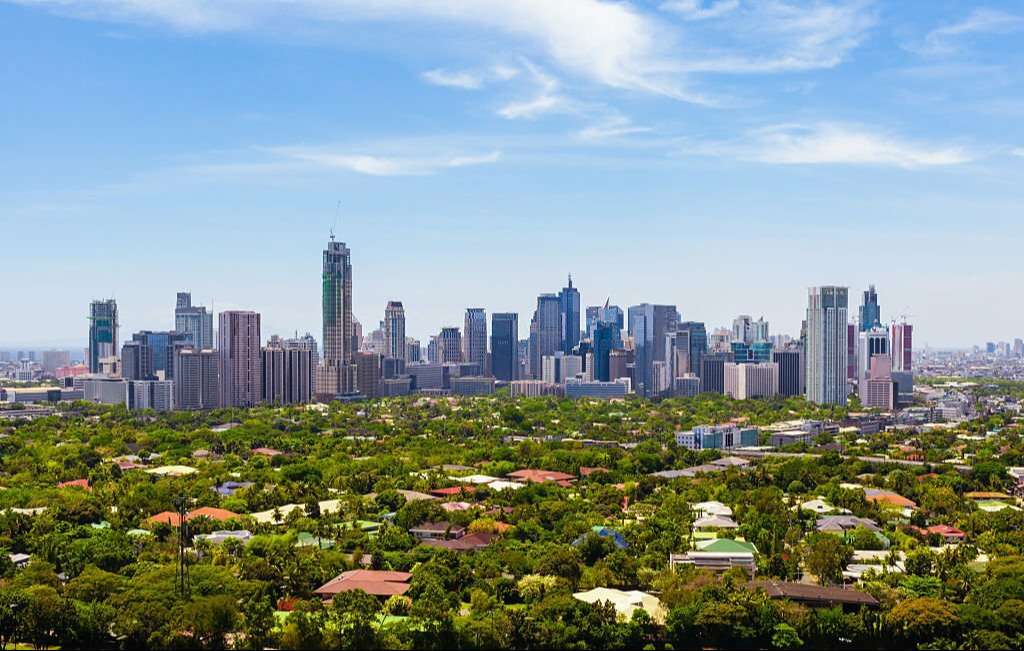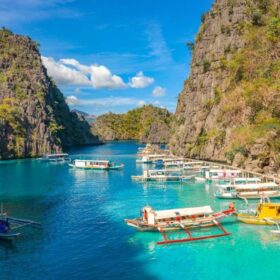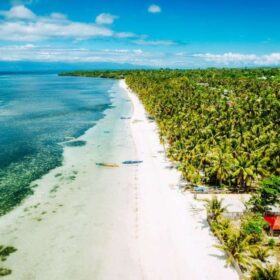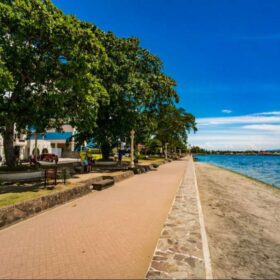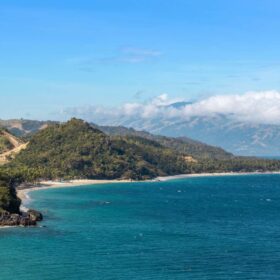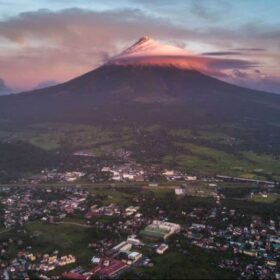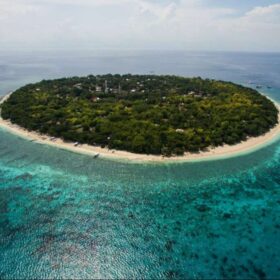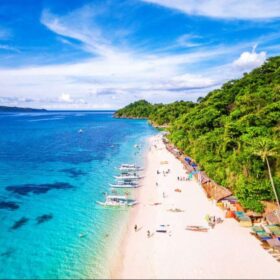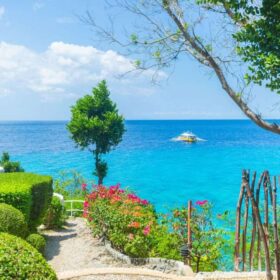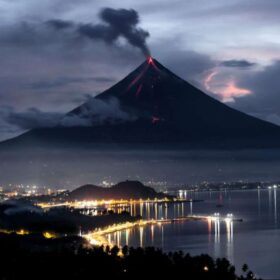The capital of the Philippines does not consistently receive positive attention in the news. Nevertheless, if you seek a lively and underrated city, Manila is prepared to defy your preconceptions.
Here, you will find a fortified citadel that served as the seat of Spanish rule over their eastern empire for centuries, Baroque churches, and bustling, vibrant markets. These markets might not always offer the most pleasant odors, but they are a must-visit. In stark contrast to the city’s hustle and congested streets, you will discover some of the world’s largest malls, of such immense proportions that they could easily be mistaken for an entirely separate town.
1. San Agustin Church

Commenced at the end of the 16th century, this magnificent structure holds the distinction of being a UNESCO World Heritage Site and stands as the oldest stone-built church in the Philippines.
The church showcases a resplendent Baroque architectural style and is a must-visit for its extraordinary interior. Inside, you’ll find trompe l’oeil paintings adorning the barrel vault and pilasters, skillfully mimicking pediments, reliefs, rosettes, laurels, and various intricate moldings.
Notable treasures within include a 16th-century crucifix located in the chancel and 17th-century choir stalls crafted from exquisite molave wood, intricately inlaid with ivory.
Plan your visit during the early or late hours of the day, as the church is closed to the public during wedding ceremonies.
2. Chinatown
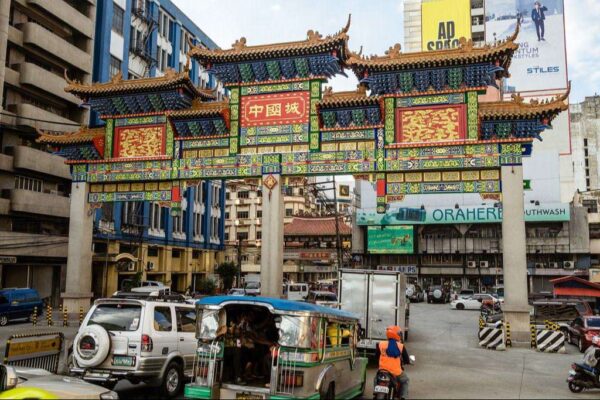
At first glance, Manila’s Chinatown may not appear to be a typical tourist destination; it is often noisy, shows signs of wear, and frequently experiences gridlocked traffic.
However, it is important to recognize that a significant Chinese trading presence has existed in this region since the 800s. This district, known as Binondo, developed as a neighboring town for the Hokkien Chinese immigrants and their descendants who faced oppression during the Spanish colonial era.
One of the best ways to explore Binondo is by taking a jeepney or calesa. The area is certainly worth your time for its Kuang Kong and Seng Guan Buddhist temples, as well as the herbal stores and vendors lining Ongpin and Carvajal Streets.
And if you happen to get hungry, there’s no better place in Manila to enjoy some delicious dim sum.
3. Intramuros
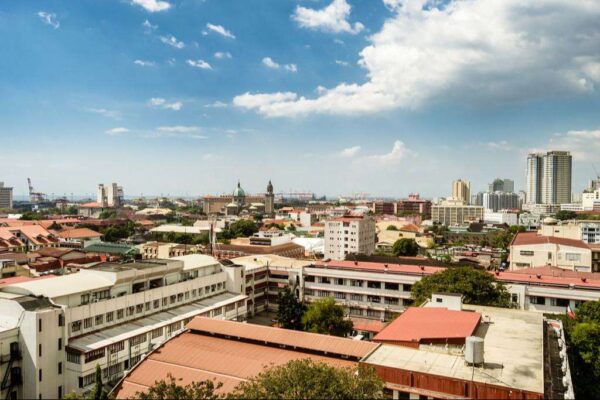
Located at the southern boundary of Intramuros, you’ll find a park and plaza deeply intertwined with Philippine history.
This is the very place where independence was formally declared in 1946, marking a significant moment in the country’s history. Moreover, it’s the site where the revered patriot José Rizal was executed in 1896, a pivotal event in the Philippine Revolution.
In 1913, on the 17th anniversary of Rizal’s death, a monument was erected at the precise location of his execution. This monument serves as his final resting place and is under the constant watch of Marines who guard it day and night.
Towards the western extremity of the park lies the Quirino Grandstand, purposefully constructed with a capacity for 10,000 people, for the proclamation of independence in 1946. Beyond its historical significance, this park stands as a rare expanse of greenery in the midst of one of the world’s most densely populated urban areas.
4. Ayala Museum
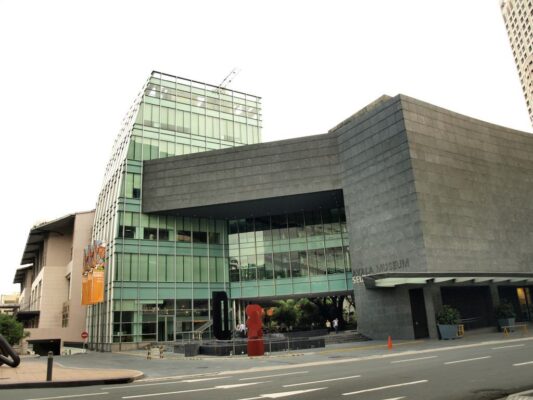
In Makati, you will discover a museum dedicated to Philippine art, ethnology, and archaeology. Housed in a spacious, air-conditioned former stock exchange building, this museum offers a rich cultural experience.
The museum features six main permanent exhibitions that delve into various aspects of Filipino heritage. These exhibits encompass topics such as traditional Filipino maritime vessels, intricately embroidered silk garments worn by the elite in the 19th century, the legacy of porcelain resulting from a millennium of trade with China, and an extensive collection of artworks from the 19th and 20th centuries, showcasing talents like Fernando Zóbel and Juan Luna.
One particularly remarkable gallery showcases an array of gold artifacts created by pre-colonial Filipino cultures. Additionally, the museum provides an opportunity to delve into the country’s history through 60 chronologically arranged dioramas at the Diorama Experience.
5. Fort Santiago
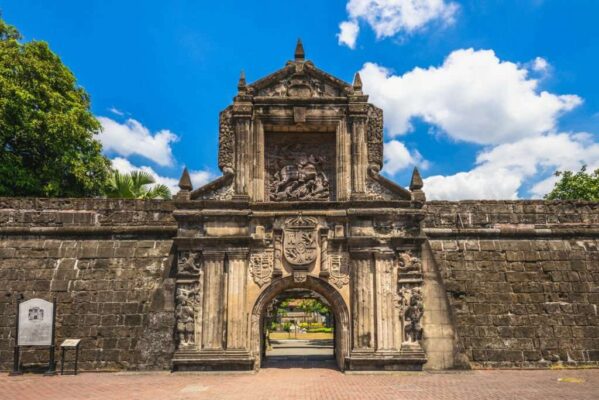
Constructed in 1571, the Spanish government’s military stronghold was situated in the northwest corner of Intramuros, in close proximity to the cathedral.
During the Second World War, the Battle of Manila inflicted damage on the compound, but significant restoration efforts were subsequently undertaken.
The monumental main gate features the Spanish coat of arms below a relief depicting the Spanish patron saint, Santiago Matamoros.
This fortress also holds historical significance in the context of the Philippines’ quest for independence. At the onset of the Philippine Revolution spanning from 1896 to 1898, the national hero José Rizal was detained within these walls prior to his execution. Visitors can explore the area where he was imprisoned, and a shrine dedicated to his memory has been established, replicating his ancestral home.
6. San Agustin Museum
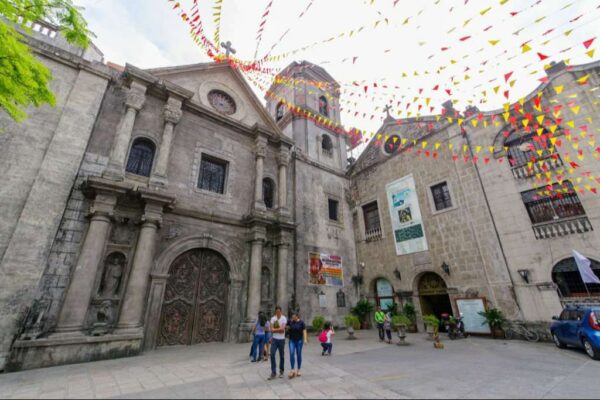
The monastery affiliated with the church sustained significant damage during the Second World War but underwent reconstruction in the 1970s. Today, its former refectory, sacristy, crypt, halls, and library have been repurposed as a museum.
This museum offers valuable insights into Manila’s colonial era and the historical significance of the Catholic faith in the Philippines. Its extensive collection features ecclesiastical art, encompassing paintings, wooden statues, crucifixes, furniture, antique missals, old vestments, and altars transported from churches throughout the country.
Visitors will also receive comprehensive information regarding the city’s history, spanning from the arrival of the Spanish in the 1500s to the events of the Second World War, which resulted in the partial destruction of Manila.
7. Rizal Park
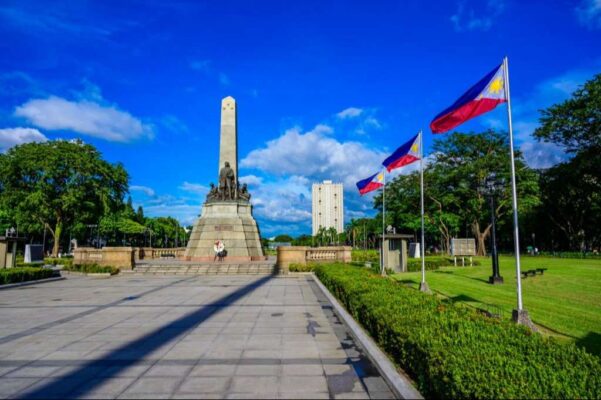
Located at the southern boundary of Intramuros, there is a park and plaza that holds immense importance in Philippine history.
This is where the Declaration of Independence took place in 1946, marking a pivotal moment in the nation’s history. It is also the site where the national hero, José Rizal, was executed in 1896, a significant event that catalyzed the Philippine Revolution.
In 1913, a monument was erected at the very spot of his execution to commemorate the 17th anniversary of his death. This monument now houses his remains and is safeguarded day and night by dedicated soldiers from the Marine Corps.
Situated at the western end is the Quirino Grandstand, with a seating capacity of 10,000, which was specifically established for the proclamation of independence in 1946. Beyond its historical significance, this park also serves as a precious open space within the city, akin to a green oasis amid some of the world’s most congested streets.
8. Paco Park
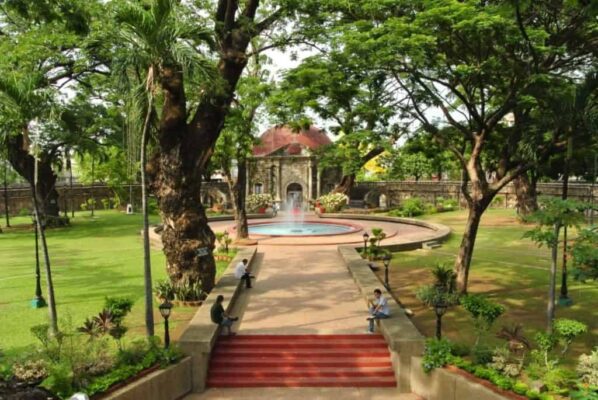
A significant point along the José Rizal trail, the serene Paco Park is the initial resting place of the national hero following his execution in 1896. Originally, this park had a circular layout and served as a cemetery during the 19th century.
However, in 1912, the tombs within the niches were cleared, and the remains were returned to their respective families. The niches, now filled and covered with cement, are still visible, with a balustraded walkway running along the top of the enclosing walls.
At the center of the park lies a charming, secluded garden adorned with lawns, trees, and flowerbeds. Dominating this space is the circular cemetery chapel of St. Pancratius.
9. Quiapo Church

Like other places of worship in Manila, this church has endured the trials of earthquakes and wars. However, throughout these adversities, it has retained its Baroque facade, featuring a grand pediment flanked by two towers and supported by Corinthian columns.
Upon stepping inside, you might be in for a surprise, as the interior is strikingly modern, having been renovated in the 1980s. The primary reason to visit is to witness the presence of the Black Nazarene on the altar.
The Black Nazarene is a life-sized image of Christ bearing a cross, meticulously carved from dark wood. Originating in Mexico, this revered icon found its way to Manila in 1606. The icon’s feast day is celebrated on January 9 (known as Traslación) and is a grand exhibition of religious devotion, attracting hundreds of thousands of barefoot penitents who participate in a solemn procession.
10. Manila Cathedral
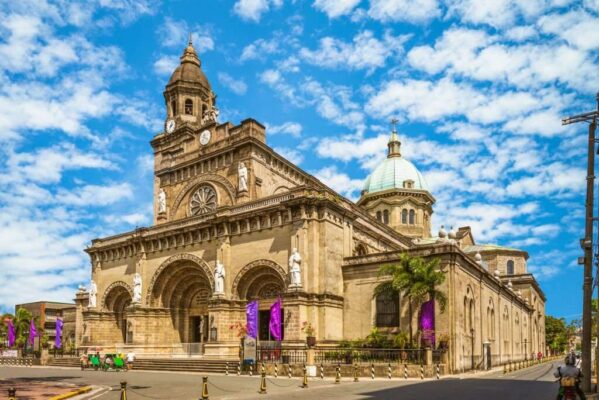
Established in 1571, Manila Cathedral has endured fires, earthquakes, and wartime destruction. The grand structure you see today on Plaza de Roma is, in fact, the eighth reconstruction.
Remarkably, these trials haven’t diminished its splendor, and unlike San Agustin, you’re welcome to enter even when a wedding ceremony is taking place.
The cathedral underwent a comprehensive restoration a few years ago, and in 2015, Pope Francis presided over a mass shortly after its reopening.
Inside, take note of the soaring vaults in the nave, the gleaming marble floor, and the stained-glass windows, skillfully designed by the 20th-century Filipino artist Galo Ocampo.
11. National Museum of Fine Arts
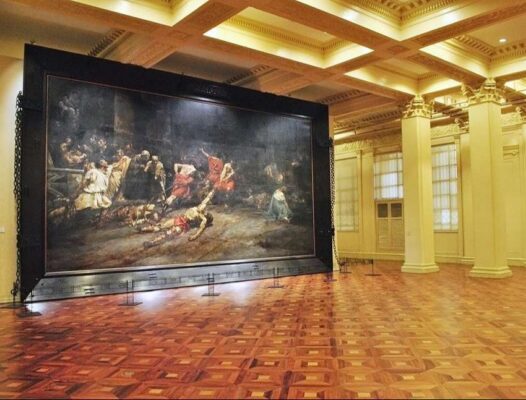
Located on the eastern side of Rizal Park, this museum showcases an impressive collection of paintings and sculptures crafted by the most prominent Filipino artists of the 19th and 20th centuries.
Among these renowned artists are Juan Luna, Fernando Zóbel, and Félix Hidalgo, who were at the forefront of a flourishing era of Filipino art coinciding with the country’s struggle for independence from Spain.
A remarkable centerpiece of the museum is Juan Luna’s Spoliarium, created in 1884. This iconic painting clinched the gold medal at the Exposición Nacional de Bellas Artes in Madrid. Its symbolism, portraying deceased gladiators being removed from the arena, was not lost on José Rizal.
12. Chinese Cemetery
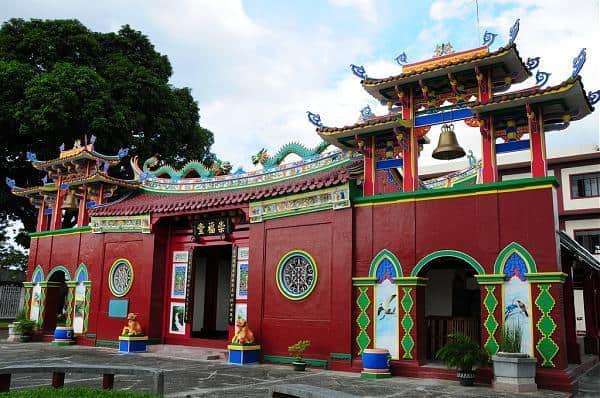
A remnant from the colonial era, this cemetery was designated for Chinese residents who were not permitted to be interred in Manila’s Catholic cemeteries. It serves as another site that offers insight into Filipino culture and was the location of numerous executions during the Japanese occupation in the Second World War. The contrast between these tranquil gardens and memorials and the bustling streets of Manila is readily apparent.
The Chong Hock Tong temple, dating back to the 1850s, is the oldest temple in Manila, characterized by a design reminiscent of temples found in China’s Fujian Province.
Take a moment to visit Liat See Tong, a memorial hall honoring Chinese community leaders and scholars who lost their lives at the hands of the Japanese.
FAQs
Q: What is the best time to visit Manila?
A: The best time to visit Manila is during the dry season, from November to April, to enjoy pleasant weather and avoid the rainy season.
Q: Is it safe to travel in Manila?
A: Like any major city, it’s essential to stay vigilant and take necessary precautions. Manila is generally safe for tourists, but it’s wise to be cautious and avoid unfamiliar areas at night.
Q: What currency is used in Manila?
A: The currency used in Manila is the Philippine Peso (PHP). Most establishments also accept major credit cards.
Q: How can I get around Manila?
A: Manila offers various transportation options, including taxis, ride-sharing services, and the LRT and MRT train systems. Traffic can be congested, so plan your routes accordingly.
Q: What are the must-try Filipino dishes in Manila?
A: While in Manila, don’t miss trying Adobo, Sinigang, Kare-Kare, and Halo-Halo. These are just a few examples of the delicious Filipino cuisine you can savor in the city.

